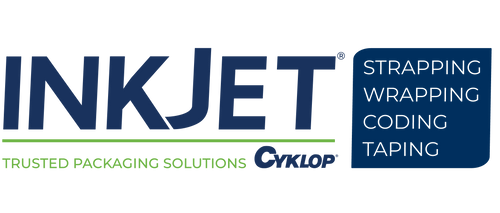How to Reduce Manufacturing Cycle Time With Efficient Printing & Labeling - In-Line Improvements #1
Cycle times are an internal metric that details how long it takes to finalize a product from the beginning of production to the end when the product is ready for sale. In industrial manufacturing, compact cycle times go hand-in-hand with maximizing profits.
The conversation around cycle times is usually intertwined with lead times (i.e., the time it takes for a client to receive their order after first making the request.) By reducing cycle times, companies can also tighten their lead times thus producing:
-
A streamlined path to bringing products to market
-
An advantage over competitors that take longer to fulfill orders
-
Higher customer satisfaction
Production setups can be varied which can make determining ways to reduce cycle times difficult due to the several solutions available. However, there is a successful method used across manufacturing and packaging sectors—automated printing and labeling.
Automated printing can benefit your business in the following ways:
Reduce Labor Needs Through Automated Labeling
Labeling by hand is a labor-intensive and time-consuming process. However, when companies are first growing, it is often the best choice to meet operational demands. Manually applying product and shipping labels is a manageable task when there are only a few hundred labels to place a day. Over time, though, company growth makes manual labeling exponentially less efficient and cost-effective.
Once operations require labeling for 500-1,000 materials a day, it can take up a worker’s entire shift. These hours cost companies substantial capital and restrict the availability of laborers to complete other responsibilities. Fortunately, companies can easily improve efficiency by introducing automatic labeling into their daily work.
Automated printer options include:
-
Thermal inkjet (TIJ) printers, which are small, lightweight, and highly mobile. With the ability to produce codes at speeds around 300 feet per minute, TIJ printers can be used to apply codes directly onto parts or product packaging.
-
Continuous inkjet (CIJ) printers, which are larger, faster machines, can be placed on production lines to mark products moving at speeds up to 1,000 feet per minute. CIJ printers have the ability to meet the production demands of industrialized facilities.
-
Print-and-apply systems, which create labels and then use applicators (e.g. automated arms, belts, hot air, etc.) to place them onto materials. Print and apply systems like EvoLabel® labelers can be integrated into an existing IT structure so that workers can remotely operate the printer or pull information from existing databases to quickly create labels.
-
High-resolution case coders, which specialize in placing larger text and images on porous substrates. Case coders are great for secondary and tertiary packaging needs.
Replace Physical Label Inventory With Digital Files
By automating label application, you’re not only eliminating labor steps but digitizing your label inventory as well. Operations that exclusively rely on hand-labeling need to constantly print out new labels and maintain an organized inventory.
One common scenario involves printing labels in-house for a worker to apply to the intended merchandise. Other companies decide to outsource their label creation. Once the labels are received, workers can create an organized label inventory to pull from. Both of these options create material waste and require workers to be meticulous when forming label backstock.
With automated labeling, this inventory becomes digitized. TIJ printers, CIJ printers, and case coders all pull from internal systems that organize labels for the user, eliminating the time needed to search through a physical cache. Further, by directly printing onto products or product packaging, companies can also reduce the material waste associated with pull-and-apply hand-labeling.
Minimize Printing and Labeling Mistakes With Automated Hardware
Depending on the operation, workers may be responsible for labeling hundreds of different products. That means hundreds of SKUs must all be placed in the correct position, so chances of human error drastically increase with this kind of volume.
If a label is placed on the wrong product or if the correct label is placed improperly, it can lead to major problems along the supply chain such as the company incurring steep fines, losing inventory, and souring the distributor/manufacturer relationship. To avoid these problems, companies often perform quality control tests where they can discover any labeling mistakes, but these tests can significantly extend cycle times.
Automated labeling minimizes these risks by standardizing the label application process. Topshelf printers and print-and-apply systems can print all day without mistakes. Plus vision systems can verify that labels were placed correctly. These steps allow companies to condense quality control and largely eliminate having to deal with incorrectly printed labels further improving cycle times.
Curious About How to Reduce Manufacturing Cycle Time? InkJet, Inc. Has Answers
Automated printing can help your company reduce manufacturing cycle time. By using a TIJ or print-and-apply system, companies can streamline the labeling process and minimize the potential for mistakes. The reduced labor needs created by automated labeling allows workers to focus on other important tasks.
If you are searching for how to reduce manufacturing cycle time, InkJet, Inc. carries everything you need to automate your printing process. From cutting-edge hardware to innovative ink formulas, we can help you develop a solution that meets all of your operational needs. Call today to get started.
For more information on how to reduce manufacturing cycle time, contact InkJet, Inc. online or by phone at 1(800) 280-3245.



